Crunch! A Bite About Our Apple Industry
History of Apples
Did you know that apples are not native to North America? They originally grew wild in Asia and the Middle East and spread throughout Europe. Travellers to North America brought apple cuttings with them to have familiar food available.
In 1679, the Griffon became the first European-style ship to sail the Upper Great Lakes. An observer described the countryside along the St. Clair River as “covered with forests, fruit trees like walnuts, chestnuts, plum and apple trees, wild vines loaded with grapes, of which made some little wine.” This could be the earliest reference to apples in Lambton County. Yet, the precise location is unknown and the author may have been describing native crabapples.
The climate and soils of Lambton County are well-suited to fruit production, particularly apples. By 1808, Joseph LaForge had settled along the St. Clair River in what is now Sarnia. In 1826, he was interviewed by Mahlon Burwell, deputy-surveyor for Upper Canada. LaForge “had improved 12 acres. The log house was 18 x 18 feet, the log barn 30 x 30. There were 22 apple trees on the property.” Planting an orchard was a top priority for early settlers after clearing the land and building a home.
In 1856, James Johnson moved to Lot 68 along the lakeshore in Bosanquet Township. His property had 100 apple trees. The previous owner, Alexander McPherson, hauled them through the woods on a sleigh from London. Johnson planted more fruit trees. He grew an extensive orchard of apples, pears, plums, cherries, quince, and peaches.
Preparation and Handling of Apples
Apples are extremely versatile. They are delicious raw and you can cook them many different ways. When stored in a cool, protected place, they keep for a long time. Apples can be dried, candied, or boiled to make applesauce or apple butter. The scraps can be pressed into cider, hard cider, or cider vinegar.
The apples were picked, sorted, and packed into large wooden barrels, baskets, or boxes. Barrels of apples were transported by team or by train to Point Edward where they were loaded onto ocean liners destined for markets in Aberdeen, Edinburgh, Glasgow, and Liverpool. Over time, the overseas market declined. Apples were still shipped through the Great Lakes but travelled in the opposite direction, to Western Canada.
By the early 1900s, the apple industry in Lambton County was thriving. Farmers and gardeners demonstrated their skills by entering produce in the local fair. In 1916, the Brooke and Alvinston Fall Fair awarded prizes for twenty-nine varieties of apple. Old varieties such as Stark, Fallawater, Maiden’s Blush, and Cabershaw are rare today.
Paring (peeling) apples is time-consuming. Apple parers come in many different shapes and sizes and make the task a bit easier. People gathered together for apple paring bees. They competed to see who was most skilful and whose parer was the most efficient.
Large-scale processing of apples took place at apple butter factories and evaporators. Many small towns in Ontario had an evaporator but they were rare on individual farms. The Johnsons were an exception. Three sons of James Johnson, James Archibald, Daniel, and Colin, continued in the apple business. Dan Johnson became the first Fruit Commissioner for Canada.
At the evaporator, workers peeled and cored the apples. Then they were sliced and put through the drying process. Dried apples could be stored for a long time. As more and more people bought refrigerators, dried apples fell out of favour and apple evaporators became a thing of the past.
Today, each farm no longer has its own small orchard. Horticulturalists grow familiar varieties like Ida Red, Honeycrisp, and Red Delicious at prime fruit-growing sites in Lambton County. Apples continue to be a much-loved dietary staple. Fresh fruit, cider, and candy apples are highlights of every harvest season.

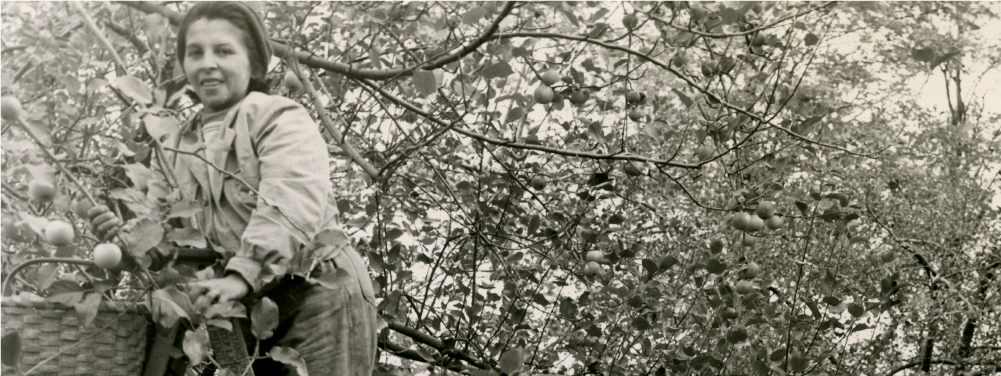
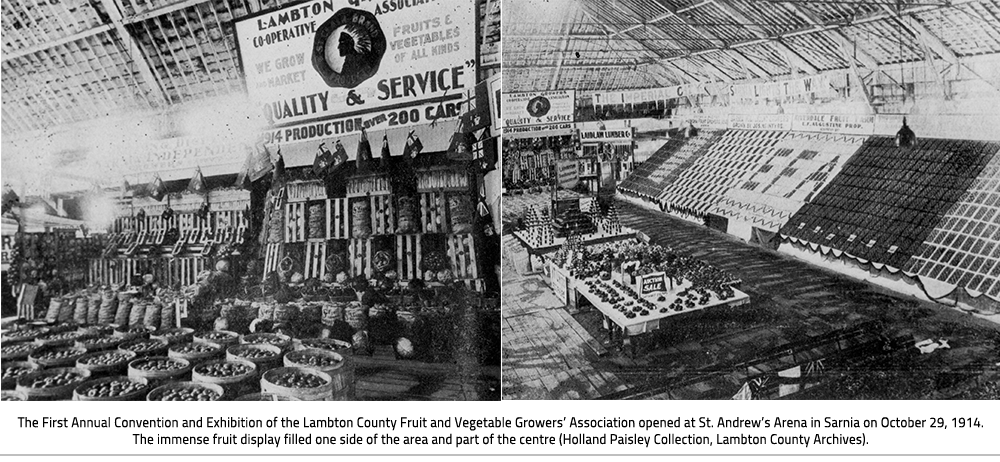
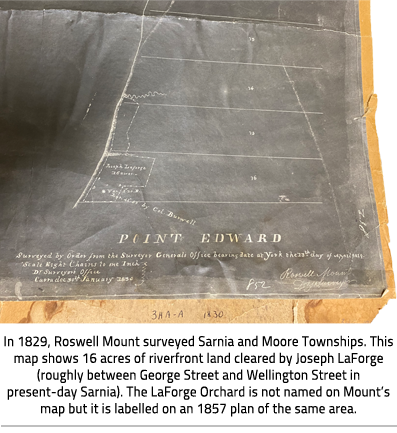
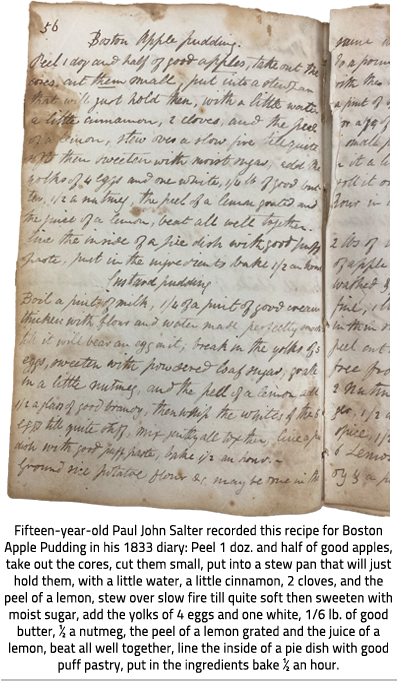

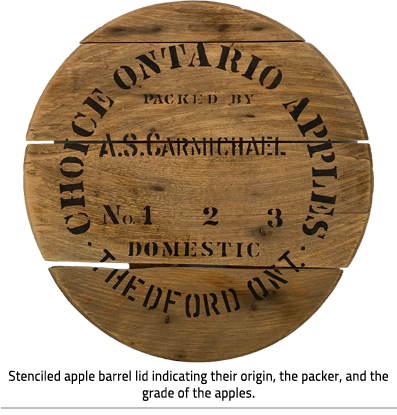
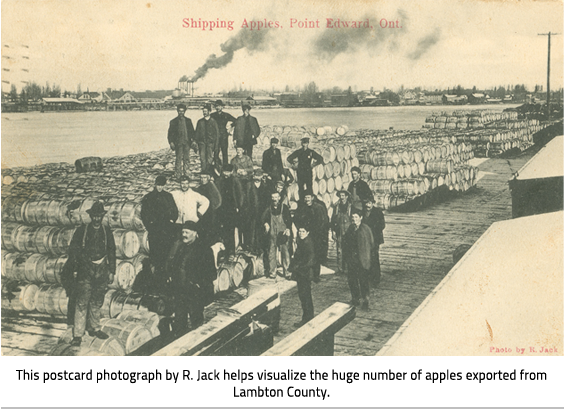
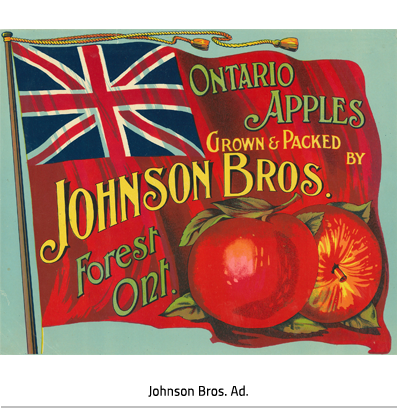
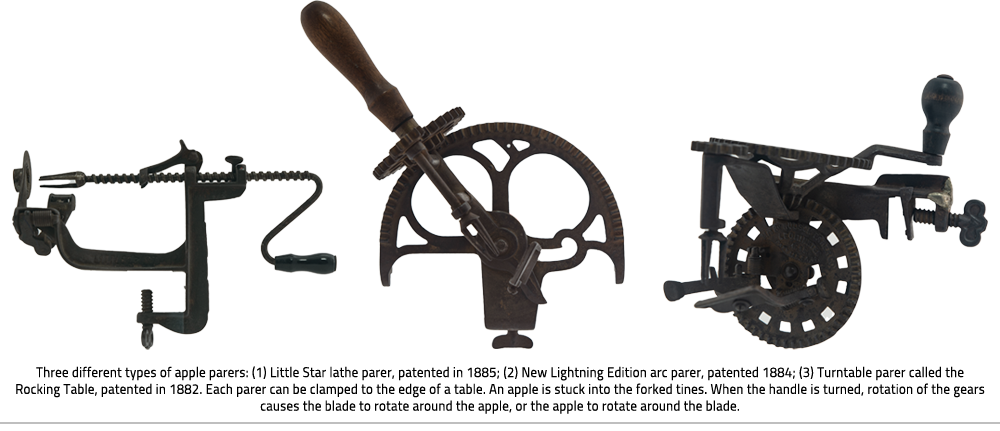
 Subscribe to this page
Subscribe to this page